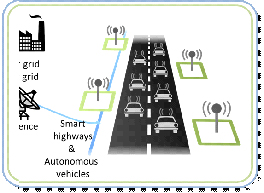MSc thesis project proposal
Signal Design for Accurate Time-of-Arrival Estimation Using Sparse Subband Signals
Our society relies heavily on Global Navigation Satellite Systems (GNSS) like GPS for positioning and navigation applications, however, GPS has a number of serious limitations, in particular in areas where it is needed most, namely in built-up areas (urban canyons) and indoor. In such areas, GPS performance is degraded as satellite signals are blocked by buildings and other objects, and GPS receivers may get "confused" by multiple reflections of GNSS signals. Also GNSS signals are vulnerable to jamming and spoofing. These limitations prevent the development of novel technologies and applications in need of higher accuracies in a cost-effective way. For example, autonomously driving vehicles cannot rely on just GPS for precision navigation due to its limited performance in built-up areas, and therefore need a host of additional sensors. In the SuperGPS project we aim at providing a cost-effective enhanced terrestrial positioning system (ETPS) with an accuracy of 10 cm, even under bad conditions such as in densely built-up areas and inside tunnels.Assignment
High accuracy Time-of-Arrival (TOA) estimation and the related ranging accuracy, especially in a multipath environment, require a high time resolution. Since the achievable time resolution is inversely proportional with the bandwidth of the used signal, decimeter accuracy ranging through sub-nano-second timing accuracy requires a signal bandwidth in the order of 1 GHz. However, such a wide bandwidth is not freely available in the radio-spectrum and would be extremely expensive and difficult to arrange. Recent research has shown that a ranging signal can instead occupy multiple smaller sub-bands. The aim of this research is to investigate the design of a ranging signal consisting of sub-band signals that are spread over a wide bandwidth but effectively occupies only a small fraction of this bandwidth (and hence be sparse), its robustness against multipath and anomalies in the transmitter-receiver chain, and the trade-offs that can be made. Several research topics can be defined on this subject, like: • How to design a sparse sub-band signal for ToA estimation? • What trade-offs can be made? But also practical validation using our software defined radio (SDR) based hardware, can be part of the thesis work.Requirements
Knowledge of ET4358 Wireless Communications, ET4386 Estimation and Detection and experience with Matlab.Contact
dr.ir. Gerard Janssen
Signal Processing Systems Group
Department of Microelectronics
Last modified: 2019-05-20
